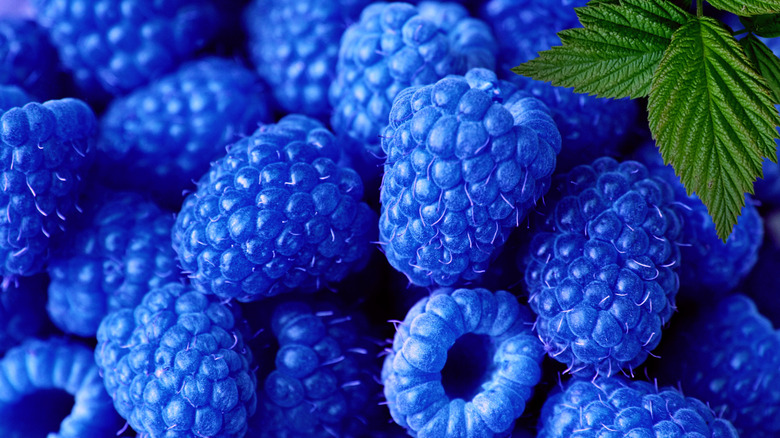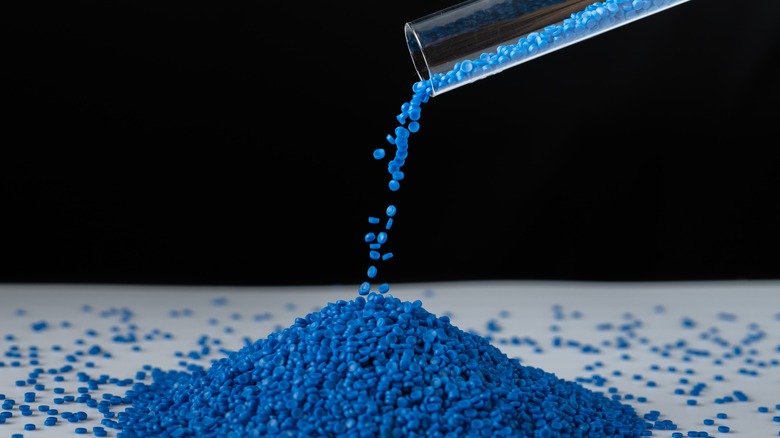What Exactly Is Blue Raspberry Flavor?
It's halftime at a hotly contested fourth-grade soccer match, and the sun is beating down on the field. Kyle's dad, who usually brings in orange slices and Gatorade, throws open a cooler packed with a special treat for the last game of the season: a jumbo bag of freeze pops in every color of the rainbow, glittering in the sun. A sea of tiny hands lurches for the loot, and when they disperse, the only color left will likely be purple — no offense to the artificial-grape fans out there. The first pop flavor to go, however, will probably be blue raspberry, also known as the only flavor that can't be found on a vine.
Whether it's in a can of pop, a Jolly Rancher, or a movie-theater ICEE, one can't help but link the vibrant candy shade to the once-contentious coloring agent Blue 1, which was the reason for the initial discontinuation of the Britney Spears-endorsed soda Pepsi Blue, as Insider noted in 2019. As you've probably gathered by now, Blue 1 and blue raspberries (like the ones pictured above) are found in food labs, not in nature. So what's the flavor's origin story?
Blue raspberry flavor had some controversial beginnings
Unlike the aforementioned Blue 1, many "raspberry" drinks and candies were dyed with a deep red hue from a dye called amaranth. Also known as Red No. 2, this amaranth dye was later banned in the U.S. after scientists discovered its potentially carcinogenic properties during the 1950s, according to Science Focus. This was just a few years before the Color Additive Amendments were enacted in 1960 by the U.S. Food and Drug Administration, which "required that only color additives [...] listed as 'suitable and safe' for a given use could be used in foods, drugs, cosmetics, and medical devices," according to a 2003 report published by Food and Safety magazine (via the FDA). While laundry detergent-colored blue raspberry might not come to mind as a picture of health and transparency, the new color and flavoring soon after this new legislation took effect.
According to a deep-dive published by Bon Appetite in 2016, the first blue raspberry product came to the scene in 1958 in the form of a snow cone syrup from the company Gold Medal. The company wanted to make its snow cone syrup stand out while simultaneously differentiating it from other red-colored flavors, like cherry and strawberry. A decade or so later, the iconic slushie brand ICEE adopted the artificial flavor — a move that may have launched it into mainstream popularity.

